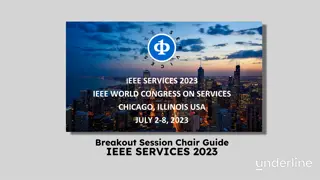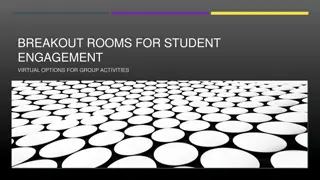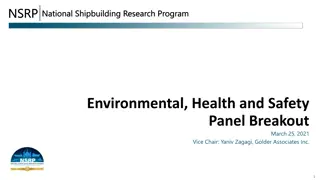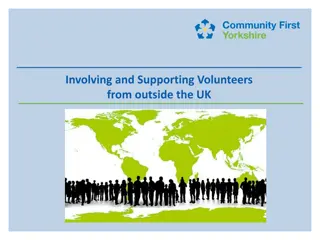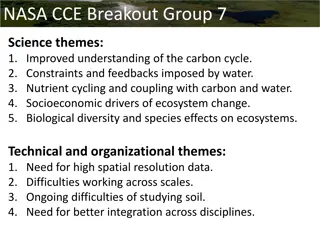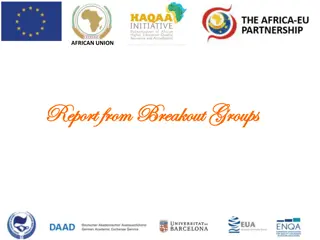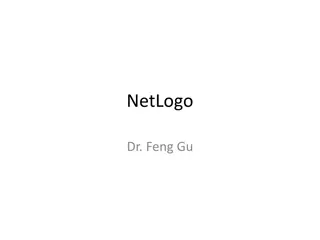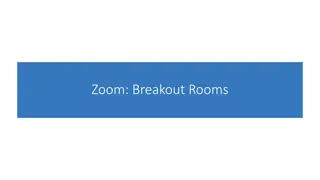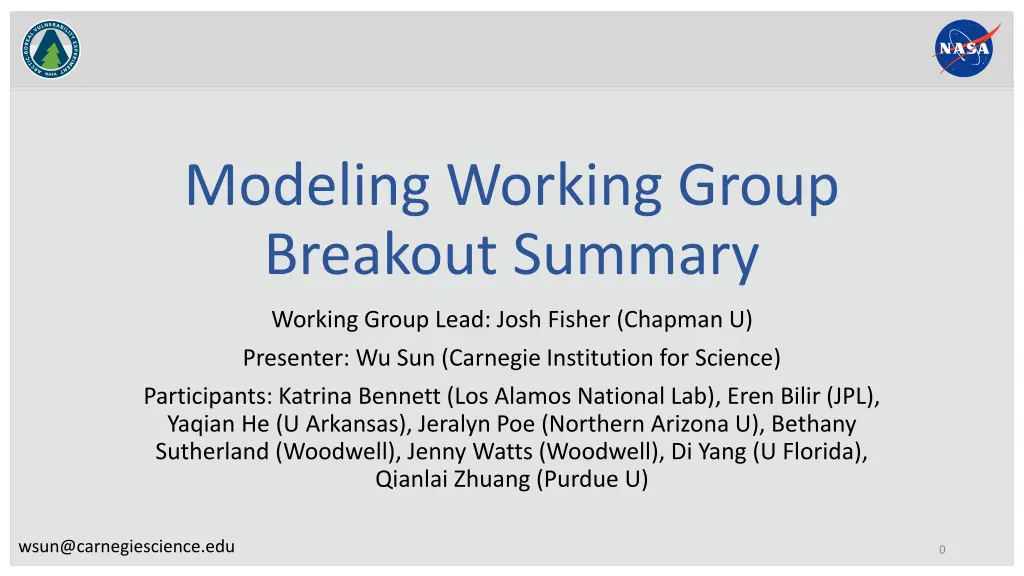
Challenges in Modeling Terrestrial Biosphere: Insights from Working Group Breakout
Explore open problems in modeling data integration, sub-grid heterogeneity, and functional relationships discussed by the working group lead Josh Fisher and presenter Wu Sun, along with other participants. Discover potential solutions to improve the effectiveness of grid-scale parameterizations and representation of disturbance-induced heterogeneity in Arctic landscapes.
Download Presentation

Please find below an Image/Link to download the presentation.
The content on the website is provided AS IS for your information and personal use only. It may not be sold, licensed, or shared on other websites without obtaining consent from the author. If you encounter any issues during the download, it is possible that the publisher has removed the file from their server.
You are allowed to download the files provided on this website for personal or commercial use, subject to the condition that they are used lawfully. All files are the property of their respective owners.
The content on the website is provided AS IS for your information and personal use only. It may not be sold, licensed, or shared on other websites without obtaining consent from the author.
E N D
Presentation Transcript
Modeling Working Group Breakout Summary Working Group Lead: Josh Fisher (Chapman U) Presenter: Wu Sun (Carnegie Institution for Science) Participants: Katrina Bennett (Los Alamos National Lab), Eren Bilir (JPL), Yaqian He (U Arkansas), Jeralyn Poe (Northern Arizona U), Bethany Sutherland (Woodwell), Jenny Watts (Woodwell), Di Yang (U Florida), Qianlai Zhuang (Purdue U) wsun@carnegiescience.edu 0
Outline Open problems Model data integration Sub-grid heterogeneity Functional relationships Missing representations Model evaluation < > model development New questions arising from ABoVE efforts Potential synergy and synthesis opportunities ABoVE < > NGEE-Arctic, CESM, CMIP, etc. ABoVE Model Intercomparison 1
Open problem: Modeldata integration Still challenging to inform terrestrial biosphere models with observations Lacking a framework to translate fine- scale land cover/plant trait/disturbance maps (1 100 m) into effective grid-scale parameterizations (50 100 km) What s observed is not what s modeled Moss may not exist as a PFT and can be misrepresented as grass Most models cannot make use of spectral information (need retrieve traits first) ABoVE Scaling Diagram Actions/suggestions Run a mesoscale model to bridge field and grid scales (Katrina Bennett, NGEE-Arctic) ABoVE-specific high-resolution CESM simulations (Yaqian He) Continued support for data harmonization - make them digestible by models 2
Open problem: Sub-grid heterogeneity The Arctic boreal landscapes are incredibly heterogeneous, sometimes varying at the spatial scale of meters Models may use fractional land cover/land columns/tree cohorts to parameterize sub-grid heterogeneity, but it s challenging to evaluate the effectiveness There is a long way to go for models to represent disturbance-induced sub-grid heterogeneity: fire scars, hill slopes, permafrost thaw slumps, thermokarst, etc. Nonlinearity: Sub-grid processes may not scale linearly (due to Jensen s inequality) and it is challenging to convert parameterizations across scales e.g., CH4emissions could be dominated by hotspots; an average patch isn t representative 3
Open problem: Functional relationships Equifinality: Model can be tuned to give seemingly convergent outcomes, but the underlying functional responses may differ (e.g., GPP vs. soil moisture) While we may constrain functional responses using observations, knowing these responses may not pinpoint which process or parameter to fix in a model e.g., multiple stomatal and plant hydraulic parameters regulate GPP response to soil moisture 4
Open problem: Missing representations Potential priorities Permafrost and peatland processes (only one among TRENDY models has them) Moss as a plant functional type Soil carbon pools as initial conditions - models often need a lengthy spin-up run because we do not know the initial carbon pools precisely Woody biomass harvest - an important lateral carbon flux Land-to-river carbon transport - another important lateral carbon flux 5
Open problem: Evaluation <> development We often learn something when models disagree with observations Need to translate insights obtained from model evaluation into actionable items that feed back to model development processes, sustaining a virtuous cycle 6
New questions arising from ABoVE efforts Or what new questions would you focus on if you were to start ABoVE right now? What happens in the Arctic does not stay in the Arctic: teleconnections of Arctic boreal changes to the Earth system (e.g., extreme weather, climate feedbacks) Strengthening the dialogue between modelers and observationalists (Qianlai Zhuang) Integrated energy balance perspective: carbon cycle processes are regulated by energy and water cycle processes such as soil freeze/thaw dynamics and snow melt and shouldn t be studied in isolation (Eren Bilir) Belowground carbon dynamics: model improvements can be biased toward aboveground processes because they are observable Model data fusion: we can evaluate the sensitivity of an output variable (e.g., carbon/water fluxes) to climate, but to improve the model requires using data to effect a change in model representation (Eren Bilir) 7
Potential synergy and synthesis opportunities NGEE-Arctic < > ABoVE Exchange of data, modeling frameworks, and expertise Wishlist: cross-agency funding opportunity to pool resources and solve common challenges ABoVE Model Intercomparison Project (MIP) MIP effort targeting key ABoVE-specific processes, e.g., permafrost and peatland processes, Arctic PFT representations Assessment of the state of knowledge and modeling capability To what extent have modeling efforts addressed the ABoVE science objectives? In retrospect, have modeling efforts focused on processes that contribute the most uncertainties? What are the lessons learned that could be transferable to the next NASA Terrestrial Ecology campaign (ARID and/or PANGEA)? Continued support is key to ensuring a lasting impact of ABoVE modeling efforts wsun@carnegiescience.edu 8



